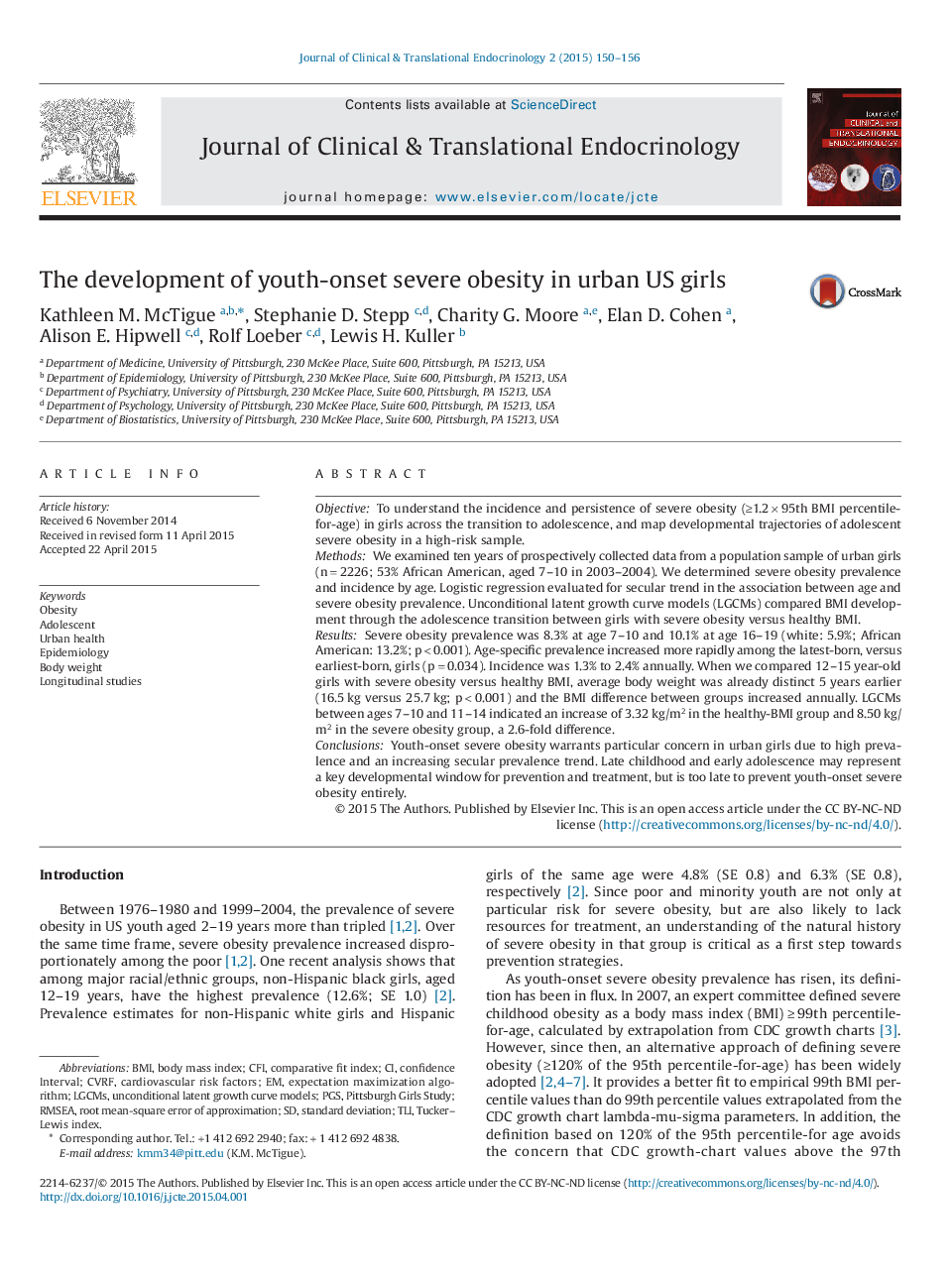| کد مقاله | کد نشریه | سال انتشار | مقاله انگلیسی | نسخه تمام متن |
|---|---|---|---|---|
| 2803997 | 1156830 | 2015 | 7 صفحه PDF | دانلود رایگان |
• Youth-onset severe obesity warrants particular concern in urban female populations.
• Among 2226 girls, prevalence was 8.3% at age 7–10, 10.8% at age 12–15 and fairly stable over teen years.
• Severe obesity prevalence increased more rapidly with age for girls born in 1995 versus 1992.
• Severely obese girls' BMI grew 2.6 times as fast as normal-BMI peers in the transition to adolescence.
• Late childhood and early adolescence is a key developmental window for prevention and treatment.
ObjectiveTo understand the incidence and persistence of severe obesity (≥1.2 × 95th BMI percentile-for-age) in girls across the transition to adolescence, and map developmental trajectories of adolescent severe obesity in a high-risk sample.MethodsWe examined ten years of prospectively collected data from a population sample of urban girls (n = 2226; 53% African American, aged 7–10 in 2003–2004). We determined severe obesity prevalence and incidence by age. Logistic regression evaluated for secular trend in the association between age and severe obesity prevalence. Unconditional latent growth curve models (LGCMs) compared BMI development through the adolescence transition between girls with severe obesity versus healthy BMI.ResultsSevere obesity prevalence was 8.3% at age 7–10 and 10.1% at age 16–19 (white: 5.9%; African American: 13.2%; p < 0.001). Age-specific prevalence increased more rapidly among the latest-born, versus earliest-born, girls (p = 0.034). Incidence was 1.3% to 2.4% annually. When we compared 12–15 year-old girls with severe obesity versus healthy BMI, average body weight was already distinct 5 years earlier (16.5 kg versus 25.7 kg; p < 0.001) and the BMI difference between groups increased annually. LGCMs between ages 7–10 and 11–14 indicated an increase of 3.32 kg/m2 in the healthy-BMI group and 8.50 kg/m2 in the severe obesity group, a 2.6-fold difference.ConclusionsYouth-onset severe obesity warrants particular concern in urban girls due to high prevalence and an increasing secular prevalence trend. Late childhood and early adolescence may represent a key developmental window for prevention and treatment, but is too late to prevent youth-onset severe obesity entirely.
Journal: Journal of Clinical & Translational Endocrinology - Volume 2, Issue 4, December 2015, Pages 150–156
